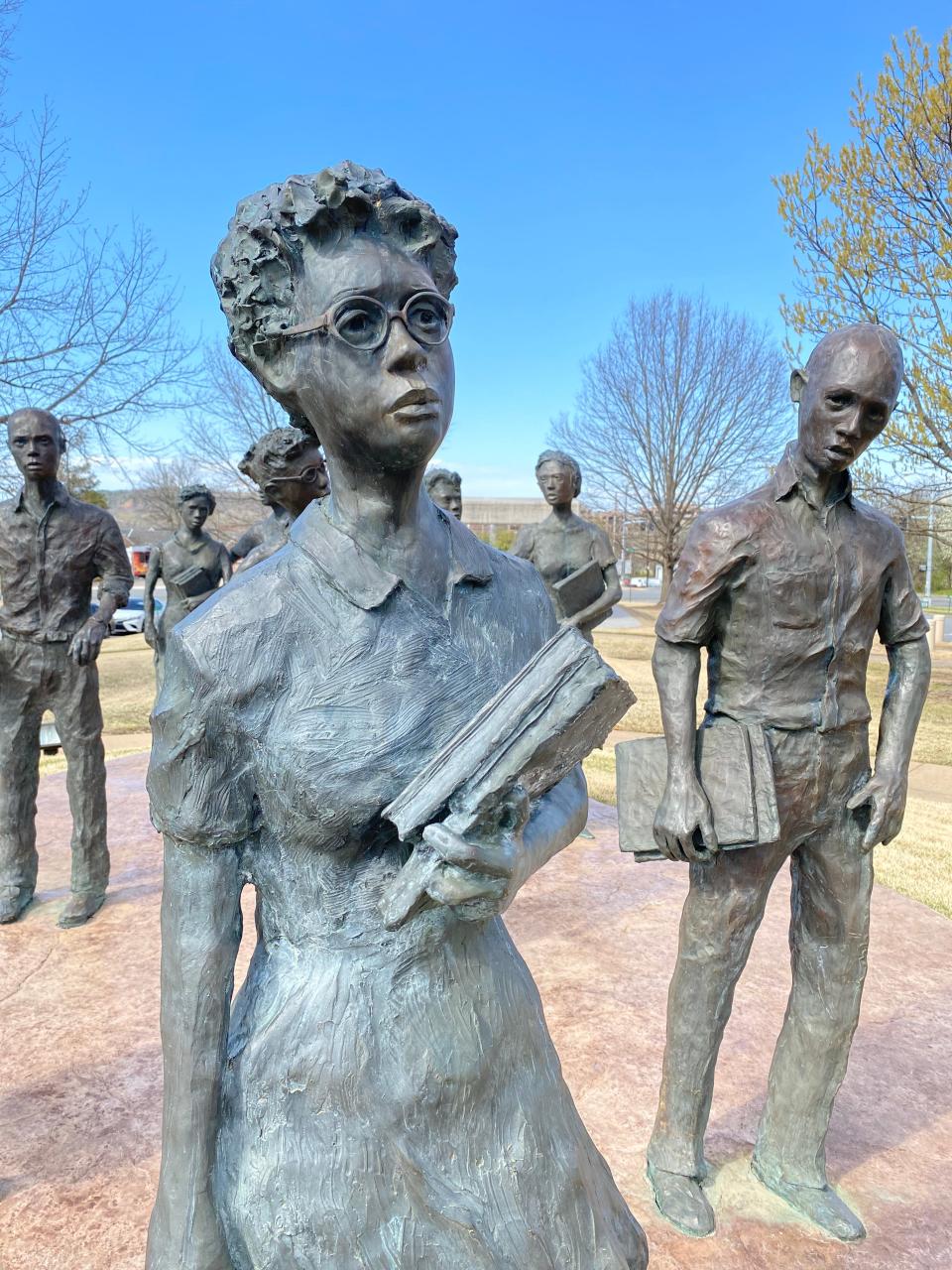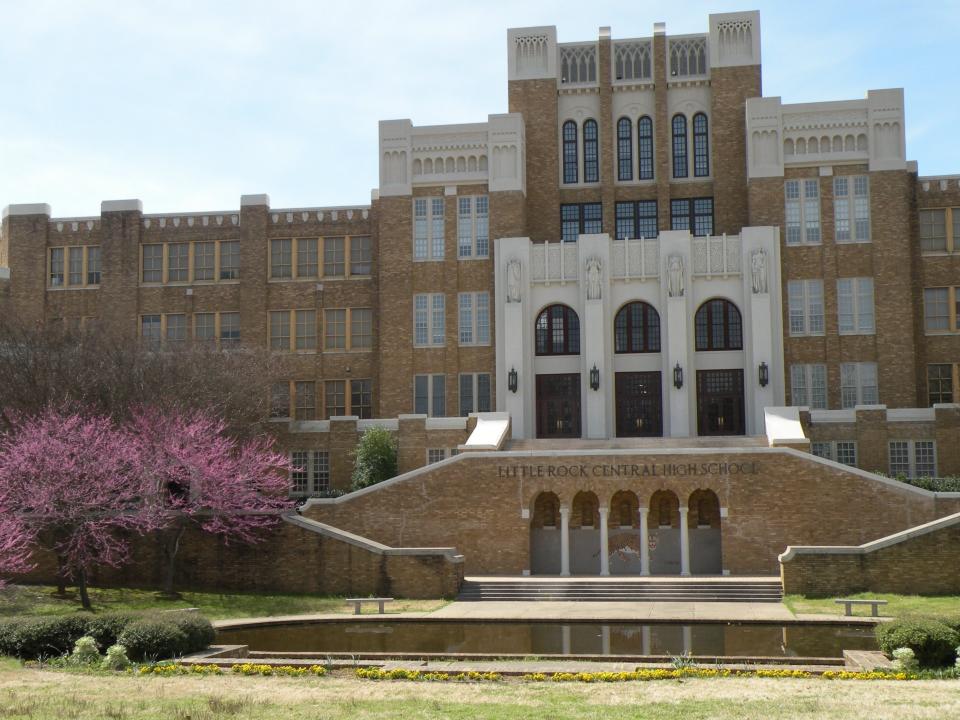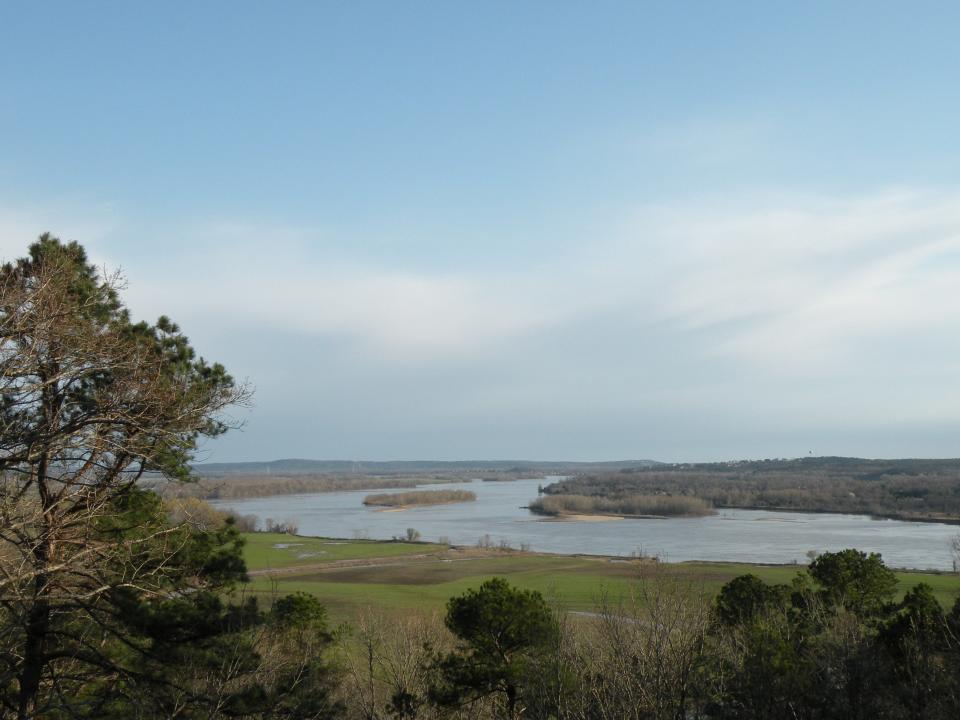Travel: Little Rock is in the center of everything in Arkansas
LITTLE ROCK, Ark. – Just as surely as the Arkansas River rolls through downtown, just about everything in Arkansas flows through Little Rock.
The Ozarks this way. Hot Springs that way. West Memphis over here. The delta down there. Little Rock sits smack-dab in the middle.
Location makes the city a great launching point for adventures across a state of great natural beauty. As the capital city, Little Rock is the hub for politics, but the state’s history, entertainment options, agricultural legacy and outdoor adventures also find their centers here.

State Capitol
The Arkansas Capitol Building stands grandly on a hilltop. This white limestone, neo-classical structure was built to impress. Grand staircases, elegant fluted columns, stained glass domes and rich oak paneling showcase architectural excellence. Six 10-foot-tall bronze doors to the outside are kept so highly polished that they glow in the sunlight. Four murals painted on arches touching the Capitol’s ceiling depict religion, war, justice and education.
Tours on weekdays entertain visitors with the building’s interesting history and present the opportunity to enter the State Treasurer’s vault and hold a stack of bills worth a half-million dollars. The taxpayer money is secure behind a 11-ton vault door. On occasion, visitors on tour enter the governor’s reception room and office, as well as the Senate and House chambers. At the State Lands Office, a collection of 200-year-old books and records document the Louisiana Purchase. After buying 530 million acres from France for $15 million in 1803, the U.S. government sent surveyors to plat the land, a project started in eastern Arkansas. The correspondences and other documents from that endeavor are available for public viewing.
More travel reviews: Northwest Florida's Emerald Coast shimmers with white sand and crystal-clear waters
Explore Hot Springs: Hot Springs, Arkansas, evolves from shady past into a playful and relaxing destination
The Capitol grounds features “Testament: The Little Rock Nine Monument,” a statue tribute to the black students who led integration of Little Rock Central High School in 1957 — a milestone in the civil rights movement.

Places to go
The River Market Entertainment District, developed in 1996, stretches along a gentle bend of the Arkansas River. The former downtown wharf area has become the city’s gathering place. The 10-block district boasts coffee houses, locally owned shops, bars and restaurants like Dugan’s Pub and Buenos Aires Grill and Café.
People stroll along Riverfront Park amid children’s play areas and a parade of 90 works of public art, plus the First Security Amphitheater, setting for an annual concert series.
From the Junction Bridge, they catch a bird’s eye view of the city. The former railroad bridge is now for pedestrian and bike use. It is one of three downtown bridges illuminated nightly by tens of thousands of LED lights. The colors of lights change seasonally and for holidays. Among locals, “gender reveal” lighting is a favorite request.
Little Rock’s main attractions are within easy reach from downtown: the Mosaic Templars Cultural Center, Little Rock Zoo, Museum of Discovery science center, and several art and heritage museums. The MacArthur Museum of Military History, located in the historic Arsenal Building, honors contributions of Arkansans who served in the nation’s conflicts. Gen. Douglas MacArthur was a Little Rock native.

The ESSE Purse Museum was a hidden gem but is overlooked no more. Displays illuminate the lifestyle, social change and femininity of American women through their choices of handbags. By decade starting in 1900, purses and their contents reveal women’s evolving status in society. Said to be the only one of its kind in America, the small museum highlights fads, celebrity status and world events.
The museum anchors a five-block area called SoMa, short for South Main. Neighborhood favorites include Roots Café, Community Bakery and Loblolly Creamery, an old-fashioned ice cream parlor. An art gallery, craft emporium, public garden, tea bar and home décor shop attract locals and visitors. Other distinctive neighborhoods with thriving business and arts districts are The Heights on the west side and Hillcrest, just a little east of The Heights.
Just across the river in North Little Rock, the Argenta Arts District draws the 20- and 30-something crowd to places like the Joint Comedy Theater, Flyway Brewery and Brood and Barley. Simmons Bank Arena stages concerts and sporting events.

Little Rock Central High School
The American Institute of Architects has honored Little Rock Central High School as “The Most Beautiful High School in America,” but the events that transpired there in the late 1950s were anything but beautiful.
The school became a flashpoint in the civil rights movement when, following the landmark Brown vs. Board of Education Supreme Court decision, nine black students became the first to enroll at the then all-white school.
White crowds engulfed South Park Street in front of Central High, jeering, spitting and threatening violence. The National Guard was called in first, then the 101st Airborne to get the black students safely inside the school.
Today Central High, which is still an active school, is a National Historic Site. Ranger-led tours begin at the visitor center on South Park Street and move to the campus to explain the causes, events and aftermath of those hateful days.
Clinton Presidential Center and Park
On the banks of the Arkansas River, the William J. Clinton Presidential Center and Park anchor the east side of downtown Little Rock. The complex includes the Clinton Presidential Library, Clinton Foundation offices, University of Arkansas Clinton School of Public Service and a 13-acre wetlands park.
Bill Clinton grew up in Arkansas and served as state attorney general and governor before his election as the 42nd U.S. president. Visitors to the museum stroll past artifacts, exhibits and a timeline of Clinton’s political career and global endeavors after leaving the White House. Museum docents standing in replicas of the Oval Office and Cabinet Room detail pivotal events that transpired during his presidency. Memorabilia includes his high school diploma, campaign buttons, saxophones and family photographs.

Biking is big
Arkansas is building a reputation as a premier biking destination. The state is home to five International Mountain Bicycling Association EPICS trails, a designation that denotes a true backcountry riding experience, all within easy reach.
Little Rock’s contribution to the statewide network of greenway biking routes is the Arkansas River Trail, a 17-mile paved route. It is a fabulous cycling experience, considered among the best because of the varied scenery, going from urban to rural. Long, level stretches parallel the river and lead to the Big Dam Bridge. Water churns on the Arkansas River 90 feet below as cyclists pedal across the bridge. It spans 4,226 feet and is the longest bicycle and pedestrian bridge in the world designed and built for that purpose. The Big Dam Bridge is just one highlight on a trail that loops past the Clinton Presidential Library, through parks like Campbell Lake, Murray and Burns and alongside golf courses.

Nearby scenic attractions
Little Rock enjoys an enviable location because of its proximity to several state parks and recreation areas.
Pinnacle Mountain State Park is a 20-minute drive and provides expansive views of the Big and Little Maumelle rivers. Hiking, biking, kayaking and nature programs are popular.
Petit Jean State Park, Arkansas’ first state park, is known for 95-foot Cedar Falls and a 20-mile network of hiking and mountain biking trails through dense forest and overlooks into the Arkansas River Valley. Soaring hawks catch the attention of vacationers at the blufftop Mather Lodge, built by the Civilian Conservation Corps (CCC).
Little Rock is within an hour’s drive of Heber Springs, a gateway town for the Greers Ferry Lake area. The lake and its many resorts are a family-friendly fishing and boating destination in the Ozark foothills.
Linda Lange and Steve Ahillen are freelance writers living in Knoxville, Tennessee.
This article originally appeared on Knoxville News Sentinel: Little Rock, Arkansas: rich in history and in the middle of the state

